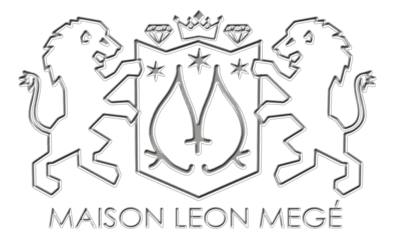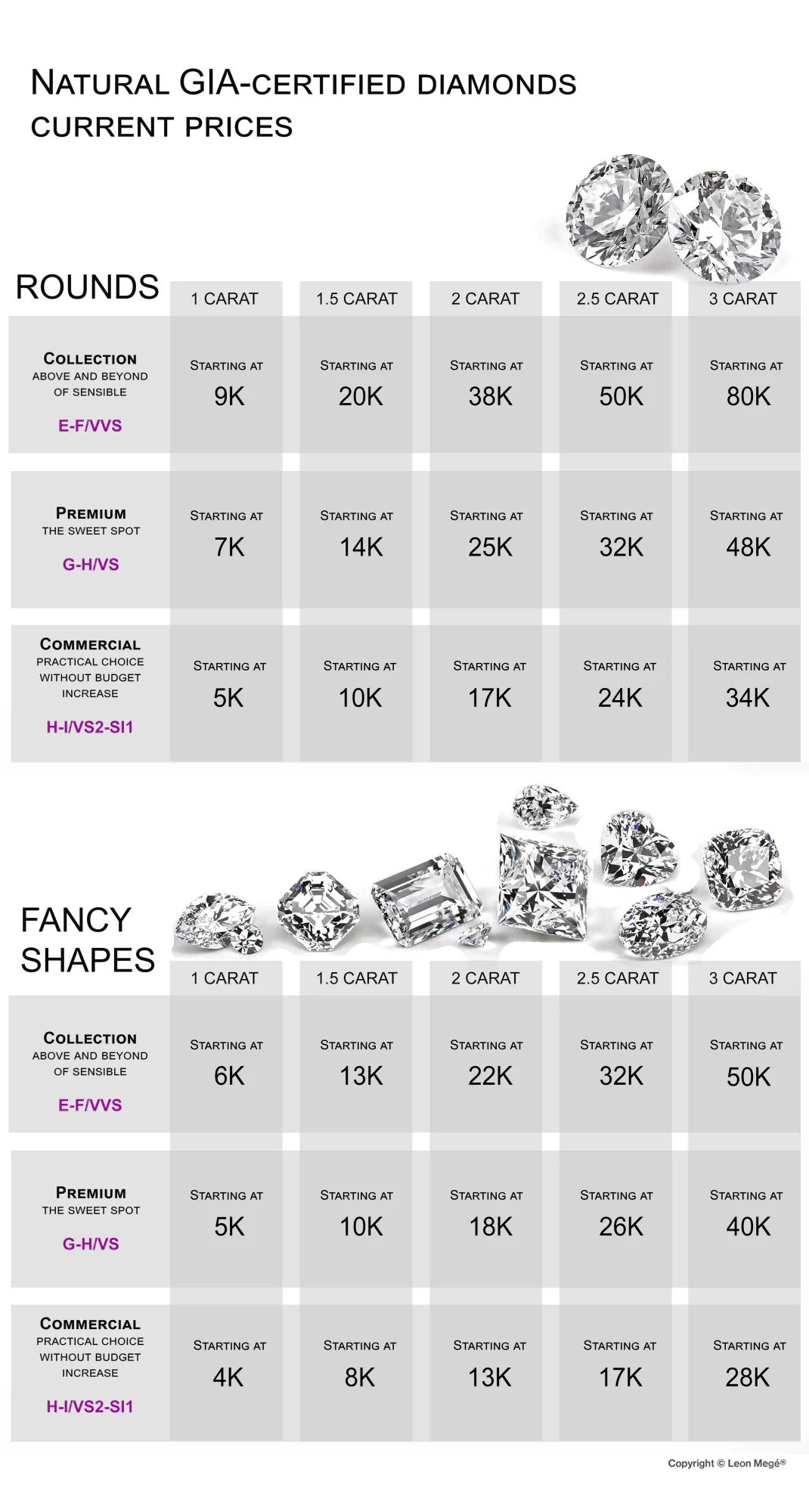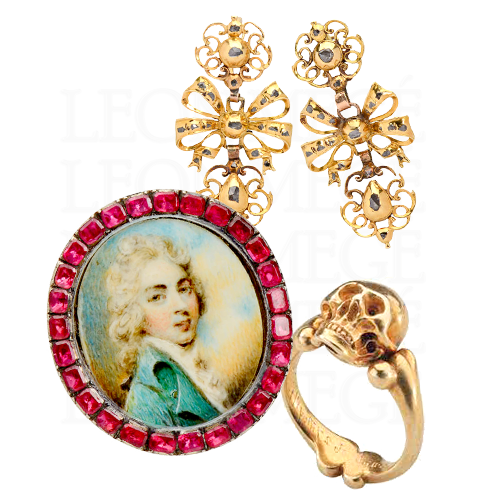
Georgian (1714-1837)
The Georgian era was named after the Hanoverian kings, all called George, and covered the years 1714 to 1830, including a period known as the Regency when the son of George IV ruled over England on behalf of his sick father. Georgian fashion developed in a time of social liberalism, reflected in the jewelry styles of the time. Never before were people so aware of the image they conveyed to the outside world with their clothes and jewelry.
Purely handmade Georgian jewelry, which predates the Industrial Revolution, is very rare. Only a handful of pieces survived. Memento Mori (meaning “remember you will die”) jewelry was popular at this time, often featuring coffins and skulls.
Victorian (1836 - 1901)
The Victorian period follows the reign of Queen Victoria in Great Britain from 1836 to 1901. Queen Victoria’s love for her husband and children inspired jewelry that reflected a romantic and sentimental outlook.
Flowers, hearts, bows, and birds inspired beautiful jewelry pieces showing the craftsmanship of the Victorian age. Serpent motifs were also popular. Gemstones were often used during the Victorian period and helped keep jewelry affordable for the mass market. Garnets, amethysts, corals, turquoise, and seed pearls were in style.
Opals were increasingly popular as Queen Victoria adored them. Diamonds were discovered in South Africa in 1867 and became popular during this period. Human hair was also incorporated into jewelry during the Victorian Period. This jewelry was given as a token of love and also worn as mourning jewelry.
It is usually divided into three periods:
Early Victorian (1836-1850)
Similar to the Georgian era, early Victorian jewelry features nature-inspired designs which were delicately & intricately etched into gold. Lockets & brooches were popular. Colored gemstones and diamonds were mostly worn in the evenings.
Mid-Victorian (1860-1880)
This era corresponds with the death of Queen Victoria’s husband, which inspired more solemn grave designs known as mourning jewelry. The pieces feature heavy, dark stones like a jet, onyx, amethyst, and garnet.
Late Victorian (1885-1900)
During the Late Victorian Aesthetic period, jewelers used diamonds and feminine, bright gemstones such as sapphire, peridot, and spinel. Star and crescent designs, as well as elaborate hat pins, were very common.
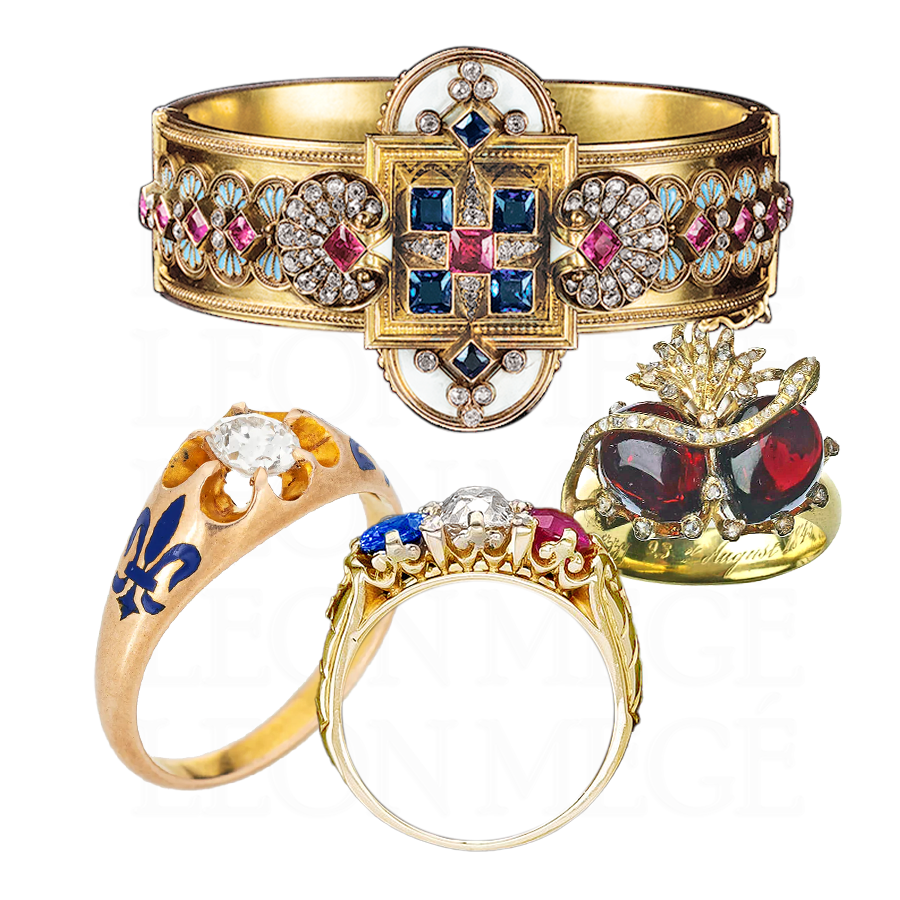
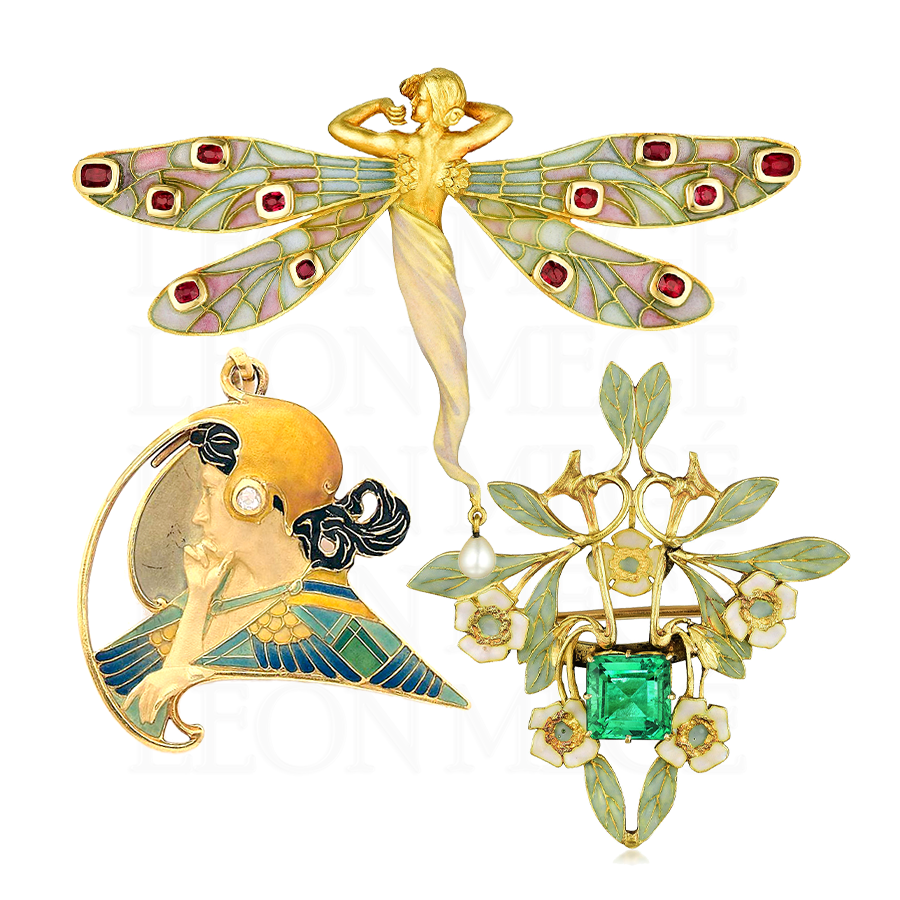
Art Nouveau (1890 - 1919)
Created by a group of avant-garde artists, the Art Nouveau style originated in Europe. It marked the transformation from elaborate handmade Victorian to mass-manufactured modern-style jewelry. Art Nouveau briefly impacted jewelry design by exploring the world of nature and fantasy characterized by lots of insects, dragonflies, and long-haired, sensual women. In a postwar flourishing arts scene, the exotic flowers, mythical beasts, and enchanted women seemed like the right thing to depict. Germans name this time Jugendstil or Youth style. Leading jewelers of the day – Louis Comfort Tiffany, Karl Faberge, Rene Lalique, and Georges Fouquet jumped on the bandwagon with beautiful and original designs inspired by natural and mythological themes. Art Nouveau was aesthetically different from other styles, with its free-floating naturalism, unusual materials, including plastics, enamel, lots of pearls, and colored gemstones, as well as entirely new design principles. It was the perfect time for experimentation with new techniques, materials, and motifs.
Edwardian (1901 - 1920)
In 1901 Queen Victoria passed away, and her son Edward VII became the King of England (1901-1910). This period refers to his reign; hence, the term Edwardian. It is also known as Belle Époque and is characterized by geometrically shaped jewelry. In the early 1900’s Louis Cartier successfully claimed that he created jewelry out of platinum. He excelled in his garland-style masterpieces, done to enhance the brilliance of diamonds. Edward VII named him first in the long list of self-promoting jewelers and designers, “the jeweler to the kings and the king of jewelers.” Jewelers used platinum and diamonds to create intricate and delicate filigree patterns that resembled lace. Light and airy designs became hallmarks of Edwardian jewelry. Edwardian motifs included garlands, bows, tassels, bar pins, tiaras, lavalieres, sautoirs, and multiple strands of seed pearls in a choker length -called dog collars.
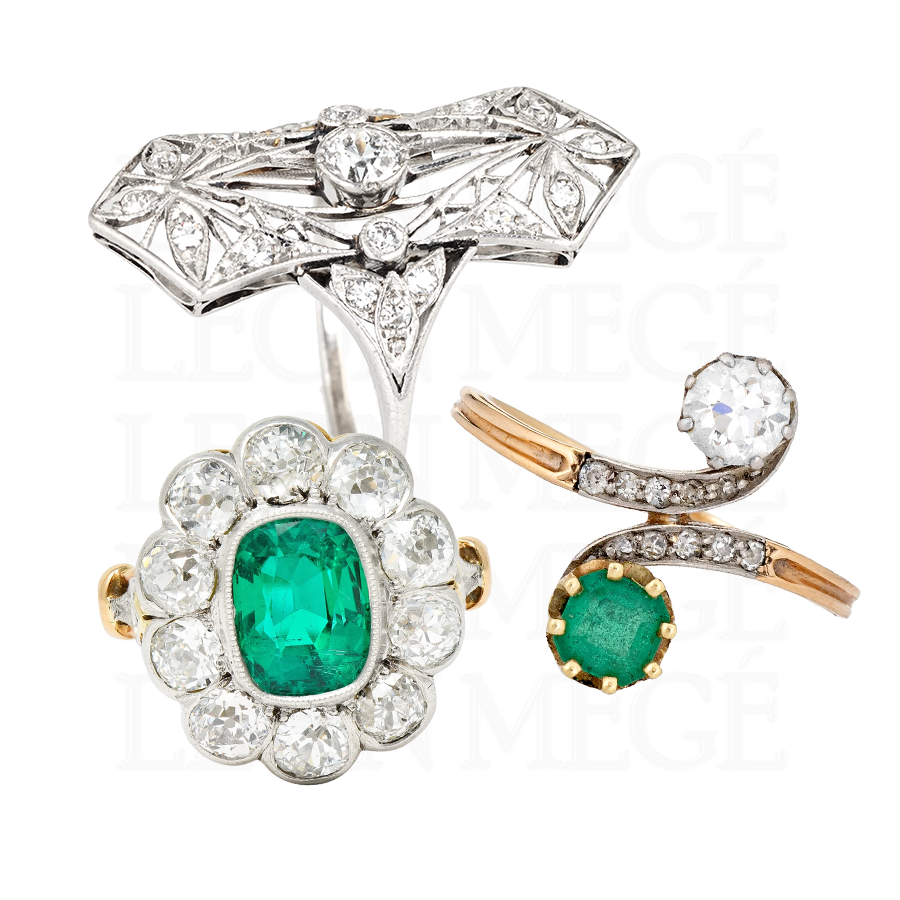
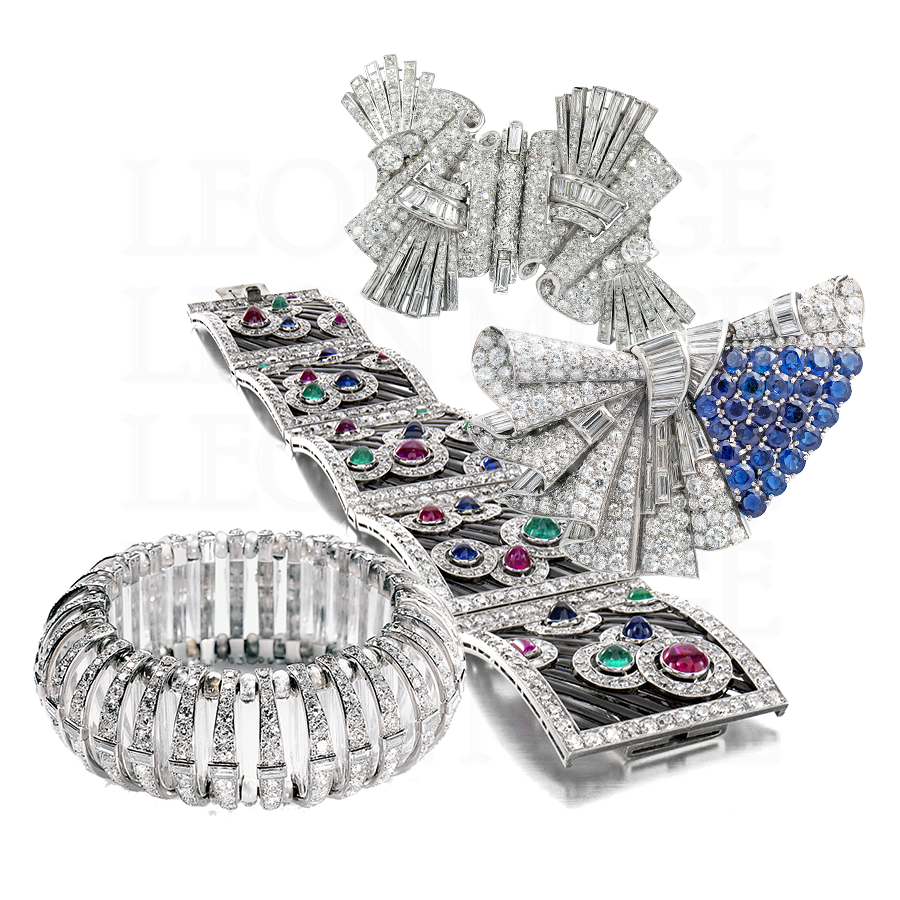
Art Deco (1920 - 1935 )
Art Deco is the geometric style that succeeded Edwardian jewelry beginning in the mid-1910’s, and reaching full bloom in the mid- 1920’s. This style originated in Paris, France and was characterized by geometric lines and angles, rather than the curves of the previous era.
Colored stones were utilized more, and opaque stones such as jade, onyx and coral were set in geometric shapes. Sleek animals such as Cartier’s panthers and falcon’s were popular in some designs. The style started out with relatively delicate designs, transitioning from the Edwardian period, with more geometric and angular patterns. It eventually evolved into bolder Art Moderne. In the Art Deco period, many stones were cut in strict, geometrical shapes, typified by the calibre technique or extensive use of elongated baguettes, square Carré, French cuts, and Single cuts.
Retro (1930-1950)
The 40s-50s Retro style is characterized by the massive use of yellow gold and a return to colorful pieces.
The Retro jewelry period began in the 1930s during the Great Depression and was finally put to rest in1950s. Jewelry during the Retro period was characterized by bulky, crude, unrefined shapes and forms that showcased large colorful gemstones in oversized, often rectangular cuts.
Synthetic rubies and sapphires were popular, along with semi-precious gems. Gold became the metal of choice because platinum was unavailable to the jewelry industry during World War II. Designers were churning multi-colored gold jewelry into bizarre combinations of rose, yellow, and green. This was a horrible time for jewelry, and remnants of Retro aesthetics still haunt us today.

